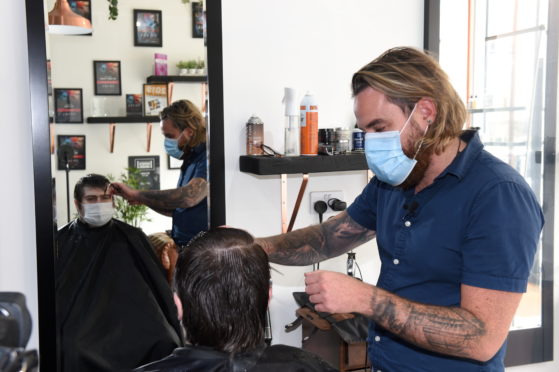Sets, perms, short back and sides, blether, where are you going on holiday? These were commonly used terms when I began my career in the industry.
Fast-forward 37 years and the role of a “hairdresser” – a person trained and qualified to cut, colour and style hair – is evolving.
Throughout the Covid pandemic the hair and beauty industry has been spotlighted as they are considered essential services to many, with one of the main questions being asked throughout lockdown being “When will my hairdresser be open?”
And, with industry already following strict hygienic practices, we’ve been able to adapt quickly, with teaching while wearing additional personal protective equipment likely to become the “norm” for the time being.
As a hair and beauty lecturer and a skilled professional I am passionate about making sure that outdated, stereotypical misconceptions of the industry are replaced with a realisation and recognition of it being a worthy career to enter into.
We aren’t yesteryear’s “gossip shops” or a last option for those with no school qualifications.
As well as keeping up with trends – collapsed layers to balayages – and learning the science of hair and its composition, it is also crucial to develop strong interpersonal skills to work with clients.
Students studying hair and beauty acquire and cultivate active listening and essential skills, equipping them to succeed in an industry that offers an array of options and professional career pathways to pursue.
A visit to the hairdresser or barbers isn’t just about making you look good; it helps to make you feel good, too.
Aside from the actual technical process, we are building relationships. We become a part of our clients’ social support network, often providing a physical connection to help combat loneliness within our communities and an ear to listen.
We are part of the highs in your lives, your graduations, your weddings up-dos and styling for celebrations, as well as your support during the lows, and all the other occasions in between.
We get to know you, your families, your likes and dislikes, what makes you smile and your worries.
With each visit we provide social wellbeing, a place where individuals can feel welcomed and at ease.
I, like many colleagues in my profession, knew that with my skills and social role I had a part to play in supporting the changes thankfully occurring today.
Growing up in the 1960s there was little intervention between couples, questioning of a family’s domestic arrangements or talking about emotions, a taboo for many.
It has now been recognised that, with these skills, our industry is in a prime position to identify signs that could save a life or just be there to listen.
Several training initiatives are now available that offer industry specialist awareness training to recognise highly sensitive matters such as mental health, domestic abuse and human trafficking and, importantly, how to navigate the situation.
This training is invaluable and is now part of the curriculum for our students.
An example is The Lions Barbers Collective, an online course created by barbers to raise mental health awareness and to identify signs to look out for when carrying out a cut, particularly for men.
Also Behind the Mask is designed to help people in the industry recognise the signs of domestic abuse. It offers advice on how to encourage individuals to seek professional advice, and provides insights into the right support agencies to direct individuals to.
At Lews Castle College UHI, we are delighted to be working closely with the Western Isles Women’s Aid (www.westernisleswomensaid.co.uk) which is also one of the local charities we support through our fundraising activities.
Each year the group gives a talk to our students about the work they do and raises awareness of what domestic abuse is, and signs to look out for and what to do.
It is impactful and has inspired staff and students to help organise activities to raise funds and awareness.
We also work closely with local businesses in our communities, who not only offer essential work placements and employment opportunities to students but work with us to develop future qualifications and skills.
As the festive season approaches, if you can and it is safe to do so, do book an appointment with your local stylist, therapist or barber; you’ll be looking good, feeling good and helping others in your community to survive and thrive.
Elspeth Robertson is the course leader for hair and beauty at the University of the Highlands and Islands based at Lews Castle College UHI.
